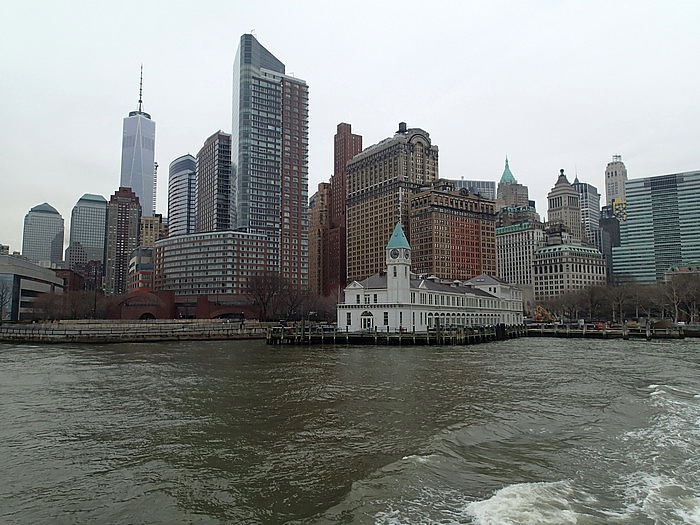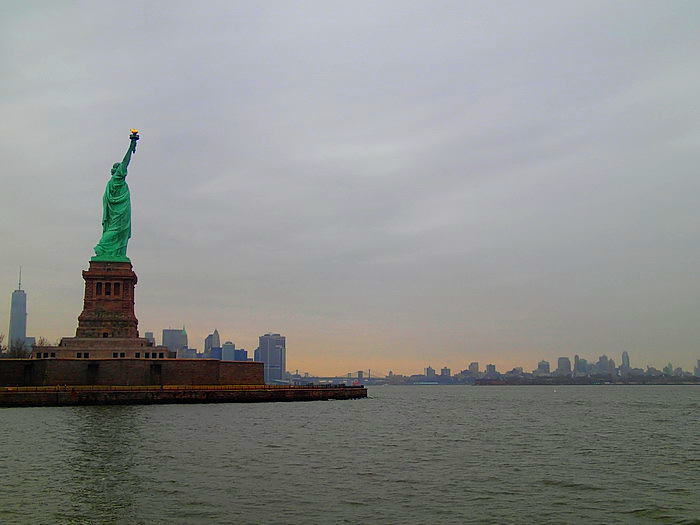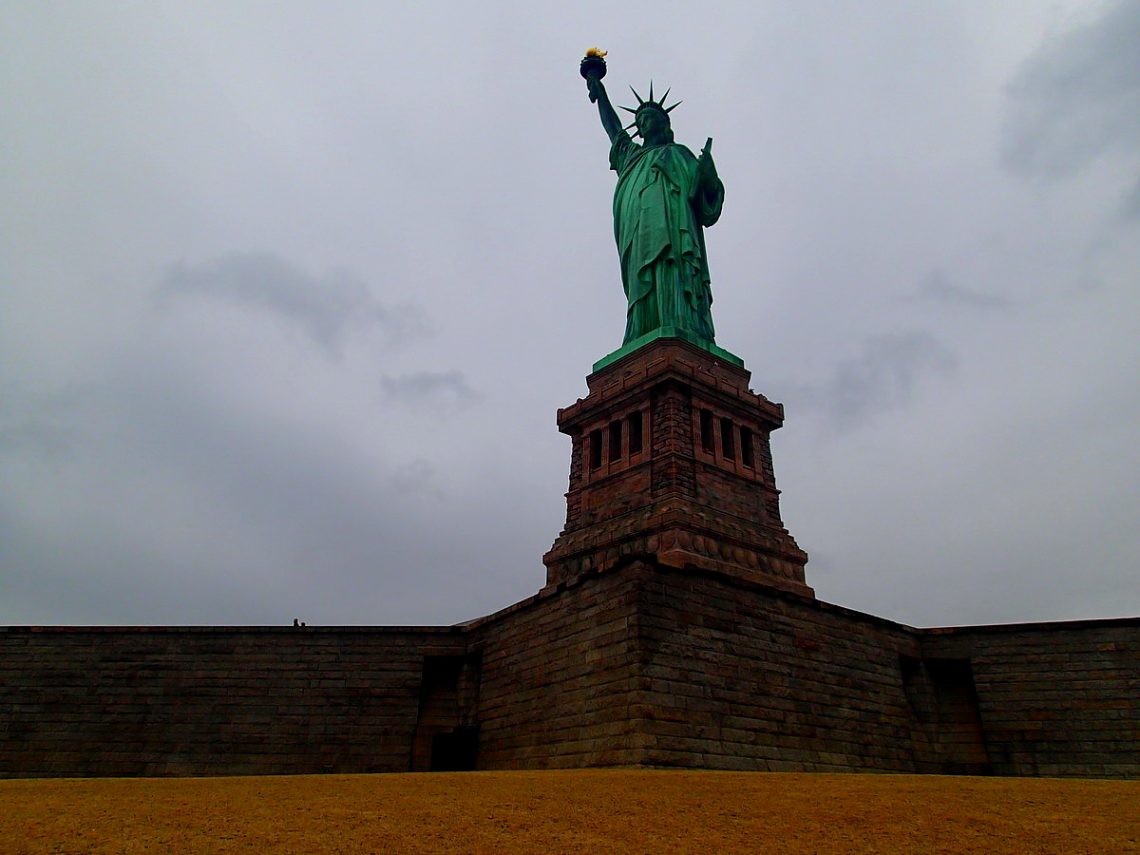Liberty Island and Ellis Island
The symbol of the American Dream, the image of New York and the New World – the Statue of Liberty – towers on a tiny island south of Manhattan.
In her right hand she raises the torch of liberty, in the left she holds the Declaration of Independence. The 46-metre tall statue which stands on a platform almost as high was a gift from France to the US for the centenary of the Declaration of Independence. The idea came from Frederic-August Bartholdi who was stunned by how huge everything is America was. Here even the peas are bigger – he wrote in a letter to his mother. So it’s not surprising that he designed a grandiose statue. His mother was the model for it. Gustave Eiffel (yes, that Eiffel!) helped him in designing the interior structure.
The statue might still be in boxes if the story didn’t also have a Hungarian involved. József Pulitzer collected the money to fund the plinth with a great idea. The statue arrived to the harbour in 1885 in boxes but they couldn’t erect it because the money for the plinth was trickling in very slowly. Then Pulitzer announced that the name of every donor will be published in his The World newspaper. From then on the money flowed in because everyone would have liked to see their name in print. Almost all the donations were under a dollar given by regular people. Pulitzer didn’t only solve an awkward situation but manage to increase circulation of his paper. The statue was finally inaugurated on 28th October, 1886.

We can get to the Statue of Liberty from Battery Park at the southern corner of Manhattan with Statue Cruises. (Battery Park got its name in 1693 from the British artillery battery positioned there.) The boats leave every 20-25 minutes from 9.30 am until 3.30 pm, tickets can also be bought online. In summer you should get the first or second boat otherwise you’ll end up spending hours in the scorching sun. The food and drink prices are like the size of the statue so might be better to take sandwiches and water with you. The boat ticket is for two islands, Liberty and Ellis Island, so no matter where you planned to go so might as well have a look at both. There are no additional entry tickets at the islands, you only have to pay for the boat. There are two types of boat tickets: with one you can go up into the crown of the statue, with the other only up to the top of the plinth. It’s not worth wasting time to climb up to the crown, not even to the top of the plinth, since there is no good views there to anywhere. The best photos can be made on the boat, of Manhattan as we leave the harbour and of the statue as we approach it.


Ellis Island
Around 12 million Immigrants arrived to Ellis island during those heroic times from 1892 to 1954. Their descendents make up 40% of the country’s population. I can recommend the museum, it’s very interesting to look at the documents and the information given on the days the immigrants spent here. Each arrival was given detailed medical, fitness and psychological tests and they were asked about their financial and criminal backgrounds. It was impossible to keep separate records for all these people so the most important things (serious illness, etc.) were written on the people themselves by chalk. Luckily there are records left, even if not of everyone, and here we can check whether there were immigrants among our ancestors. We can find the freely accessible database on the homepage of the Ellis Island Foundation. In peak times about 5000 people went through the somewhat humiliating checks which lasted about 305 hours. 98% of the arrivals could step on the soil of their dreams while 2% were sent back to the ships. The steamers were required to take those unfortunates back to where they originally boarded. Lots of them tried to swim across to Manhattan or committed suicide. In one large hall we can see various everyday or decorative objects from all nationalities going through, for example a small tablecloth embroidered with ‘Jó reggelt’ (Good morning, in Hungarian)

They exhibited the medical objects used in the examinations and photos documenting the whole immigration process. On the top floor we can visit the large room where they put up those who were stuck on the island for a couple of nights. There are three levels of beds constructed from wire mesh – clearly not too comfortable.
The immigration process was shown in several movies, such as the Godfather.
During the renovation of the museum they looked up lots of people who went through immigration here and asked them to describe their experience in their own words. These recollections can be heard through speakers in the various exhibition rooms. It’s worth watching the movie made of the island and the people going through it – it’s free and captivating.


